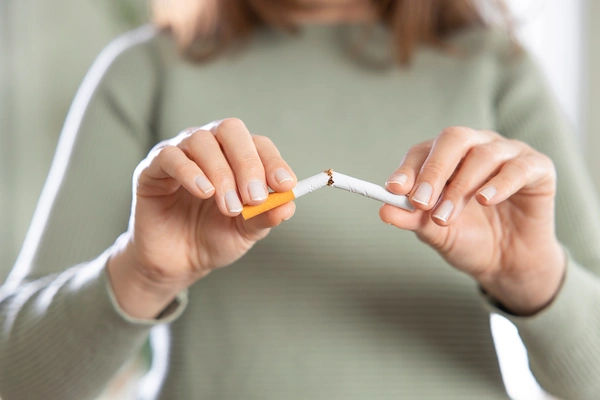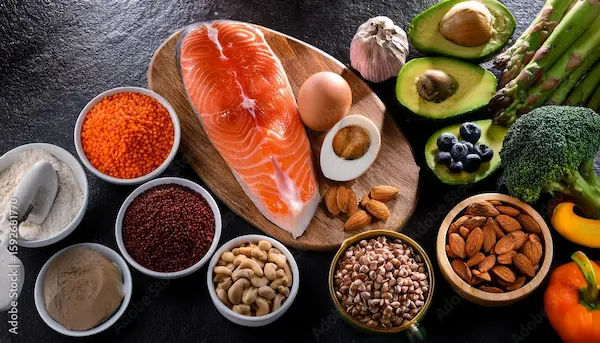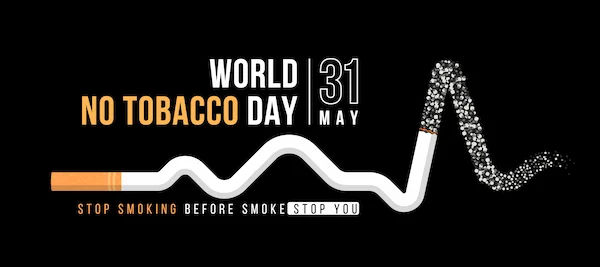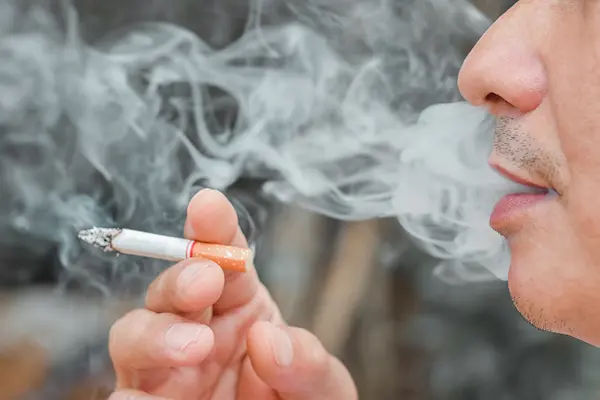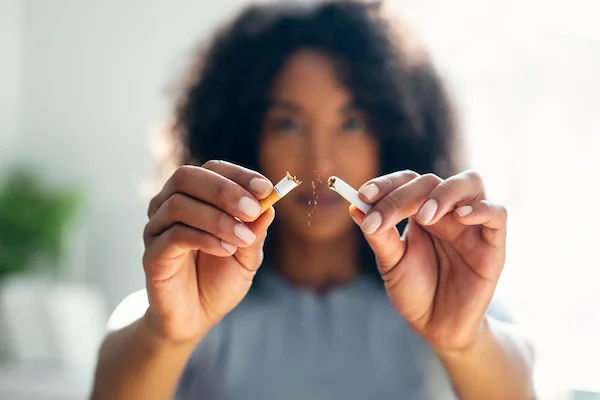Guide to Say No To Tobacco
Discover effective strategies to say no to tobacco and lead a healthier life. Learn about risks, benefits of quitting, and practical tips for success.

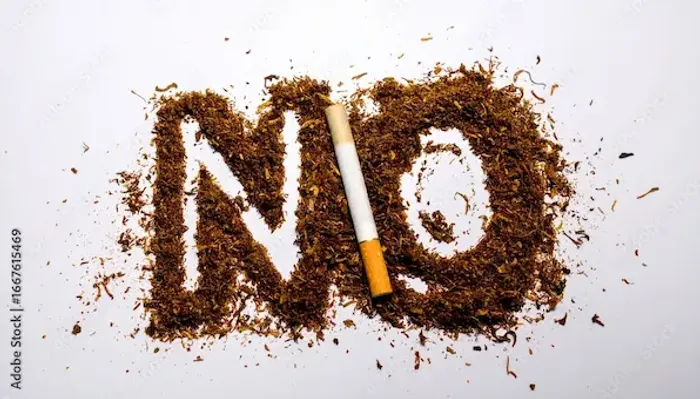
Introduction
The decision to say no to tobacco is one of the most powerful choices you can make for your well-being. Whether you're a smoker or use smokeless products like gutka or khaini, tobacco's grip is strong, fuelled by nicotine's highly addictive nature. But within you is an even stronger force: the desire for a longer, healthier, and more vibrant life. This comprehensive guide is designed to be your trusted companion on that journey. We will move beyond simply listing the dangers and delve into a practical, step-by-step action plan. You'll understand the science of addiction, discover proven methods to quit tobacco, learn how to handle cravings in real-time, and build a supportive environment for lasting success. Saying no isn't about deprivation; it's about saying yes to better health, more energy, and financial freedom. Let's begin.
Understanding the Enemy: What’s Really in Tobacco?
Before you can defeat an enemy, you must know it. Many people think tobacco is just dried leaves with nicotine. The reality is far more sinister. Every puff or pinch introduces a cocktail of thousands of chemicals into your body, many of which are poisons.
The Trio of Toxins: Nicotine, Tar, and Carbon Monoxide
- Nicotine: This is the chemical that keeps you hooked. It reaches your brain in seconds, creating a temporary feeling of pleasure and alertness. When that feeling wears off, you crave more, leading to addiction. It also raises blood pressure and heart rate.
- Tar: This is the sticky brown substance that coats your lungs, similar to the tar used on roads. It damages the cilia (tiny hairs that clean your lungs) and is a primary cause of lung cancer, emphysema, and chronic bronchitis.
- Carbon Monoxide: This poisonous gas takes the place of oxygen in your red blood cells. This means your heart has to work much harder to pump oxygen to your vital organs, leading to increased risk of heart disease and stroke.
Beyond the Basics: 7,000+ Chemicals and 70 Known Carcinogens
Shockingly, the trio above is just the beginning. Tobacco smoke contains over 7,000 chemicals. According to the National Cancer Institute, at least 70 of these are known carcinogens, meaning they can cause cancer. This list includes:
- Arsenic: Used in rat poison.
- Formaldehyde: Used to preserve dead bodies.
- Ammonia: A common cleaning agent.
- Acetone: Found in nail polish remover.
Understanding this toxic payload makes the act of saying no to tobacco a clear act of self-preservation.
Consult a Psychiatrist for the best advice
The Domino Effect: How Tobacco Impacts Your Body from Head to Toe
Tobacco use doesn't target just one organ; it sets off a domino effect of damage throughout your entire body.
Immediate Consequences
The damage begins from the very first use. You might notice:
- Bad breath and stained teeth: Tobacco tar stains teeth yellow and brown and causes persistent foul breath.
- Loss of taste and smell: Your senses become dull, making food less enjoyable.
- Reduced fitness: Nicotine and carbon monoxide constrict blood vessels and reduce oxygen, making you feel out of breath quickly.
- Premature ageing: Smoking breaks down skin elasticity, leading to wrinkles and a leathery complexion.
Long-Term Health Risks
Over time, the cumulative damage leads to devastating, often fatal, diseases. The health risks of chewing tobacco are equally severe, including mouth, esophageal, and pancreatic cancer. Long-term risks include:
- Cancer: Lung, throat, mouth, pancreas, bladder, kidney, and more.
- Cardiovascular Disease: Heart attack, stroke, and peripheral artery disease.
- Chronic Obstructive Pulmonary Disease (COPD): A progressive disease that makes it increasingly hard to breathe.
- Diabetes: Smoking increases insulin resistance.
- Weakened Immune System: Making you more susceptible to infections.
The Power of "No": Why Quitting is the Best Decision You'll Ever Make
The good news is that your body has an incredible ability to heal itself the moment you stop using tobacco. The benefits of quitting smoking timeline is a powerful motivator.
Your Body's Healing Timeline: From 20 Minutes to 15 Years
- 20 minutes after quitting: Your heart rate and blood pressure drop to normal.
- 12 hours: The carbon monoxide level in your blood returns to normal.
- 2 weeks to 3 months: Your circulation improves and lung function increases.
- 1 to 9 months: Coughing and shortness of breath decrease as lung cilia regrow.
- 1 year: Your added risk of coronary heart disease is half that of a smoker's.
- 5 years: Your risk of cancers of the mouth, throat, and bladder is cut in half.
- 10 years: Your risk of dying from lung cancer is about half that of a continuing smoker.
- 15 years: Your risk of coronary heart disease is the same as a non-smoker's.
The Financial and Social Benefits You Can't Ignore
Beyond health, quitting tobacco frees up significant money. A pack-a-day smoker can save tens of thousands of rupees per year. Socially, you'll be free from the stigma, enjoy fresher breath and clothes, and protect your loved ones from the dangers of secondhand smoke.
Crafting Your Personal Quit Plan: A Step-by-Step Approach
A goal without a plan is just a wish. A structured quit plan dramatically increases your chances of success.
Step 1: Set a Quit Date and Commit Publicly
Choose a date within the next two weeks. This gives you time to prepare without losing motivation. Tell your family, friends, and colleagues. This public commitment creates a support system and adds accountability.
Step 2: Identify Your Triggers and Plan Alternatives
Triggers are situations that make you crave tobacco (e.g., after a meal, with coffee, when stressed). List your top 5 triggers. For each one, plan a healthier alternative. For example, if you smoke after dinner, plan to go for a short walk instead.
Step 3: Choose Your Quitting Method
Will you stop all at once ("cold turkey") or use aids? Research your options (detailed in the next section) and decide what fits your personality and level of addiction. If you are unsure which method is best for you, consulting a doctor online with Apollo24|7 can provide personalised guidance based on your health profile.
Proven Methods to Quit Tobacco for Good
There is no single "best" way to quit; the best method is the one that works for you.
Going "Cold Turkey": Is It Right for You?
This involves stopping tobacco use entirely on your quit date. It requires immense willpower and is best for light to
moderate users. While challenging, some people prefer this clean break.
Nicotine Replacement Therapy (NRT): Patches, Gum, Lozenges
NRT provides low doses of nicotine without the other toxic chemicals. This helps manage nicotine withdrawal symptoms like cravings and irritability while you break the habit of using tobacco. Patches provide a steady dose, while gum and lozenges help with acute cravings.
Prescription Medications: When to Seek Medical Help
Drugs like Varenicline (Champix) and Bupropion (Zyban) can help reduce cravings and withdrawal symptoms. These require a prescription. If your previous attempts to quit have failed or you are a heavy user, consulting a doctor to discuss prescription options can be a crucial step.
Behavioral Therapy and Counselling
This involves working with a counsellor to change your thinking and behaviour patterns around tobacco. It teaches you coping skills and is often combined with medication for the highest success rates.
Winning the Moment: Practical Strategies to Say "No" to Cravings
Cravings are intense but temporary, typically lasting only 5-10 minutes. Having a game plan is key.
The 4 D's: Delay, Deep Breathe, Drink Water, Distract
- Delay: Wait it out. Remind yourself that the craving will pass.
- Deep Breathe: Take slow, deep breaths to calm your mind and body.
- Drink Water: Sip water slowly. It helps flush nicotine from your system and keeps your mouth busy.
- Distract: Do something else immediately. Call a friend, chew gum, or take a quick walk.
Changing Your Routine and Environment
If you always smoke on your balcony, avoid it for a few weeks. If you drink coffee, switch to tea. Changing your
patterns disrupts the automatic link between the trigger and the tobacco use.
Navigating Withdrawal: What to Expect and How to Cope
Withdrawal is your body's reaction to being without nicotine. It's a sign of healing, but it can be uncomfortable.
Common Symptoms
Symptoms peak in the first week and fade over 2-4 weeks. They include irritability, anxiety, difficulty concentrating, increased appetite, and restless sleep.
Managing Weight Gain and Stress Without Tobacco
To manage weight, stock up on healthy snacks like fruits and vegetables and increase physical activity. For stress, adopt new habits like exercise, meditation, or a hobby. If you experience persistent anxiety or depression during withdrawal, seeking support from a mental health professional is highly recommended.
Staying Tobacco-Free: Building a New, Healthier Identity
Quitting is a journey, not a single event. The goal is to become a non-user.
Celebrating Milestones and Rewarding Yourself
Acknowledge your success! Celebrate 24 hours, one week, one month, and one year of being tobacco-free. Use the money you've saved to treat yourself to something special.
What to Do If You Slip Up: It's Not a Failure
A slip (having one cigarette or chew) is not a full relapse. Don't be too hard on yourself. Analyse what triggered the slip, learn from it, and recommit to your quit plan immediately. Don't let one mistake derail your entire journey.
You Don't Have to Do It Alone: Seeking Support
Support is a critical component of success. You are not in this fight alone.
Leaning on Friends, Family, and Support Groups
Tell your support system exactly how they can help, whether it's listening when you're stressed or celebrating your wins. Joining a support group, in-person or online, connects you with people who understand exactly what you're going through.
The Role of Digital Health Platforms in Your Journey
Technology can be a powerful ally. Apollo24|7 offers access to resources, teleconsultations with doctors for advice and prescriptions, and even counselling services, all from the comfort of your home. This makes getting professional help convenient and discreet.
Conclusion: Your Healthier Future Starts Today
Saying no to tobacco is arguably the single most important gift you can give to your health. It's a journey that requires courage, planning, and persistence, but the rewards are immeasurable. You are reclaiming your health, your energy, your finances, and your freedom. Every craving you resist is a victory. Every day you are tobacco-free is a celebration. Remember, you have the power to break free. Use the strategies in this guide, seek support when you need it, and take that first step. Your healthier, smoke-free future is waiting for you, and it starts today.
Consult a Psychiatrist for the best advice
Consult a Psychiatrist for the best advice

Dr. Puli Vanaja Reddy
Psychiatrist
15 Years • MBBS, MPH (USA), DCP (UK)
Hyderabad
Apollo Hospitals Jubilee Hills, Hyderabad
(200+ Patients)

Dr. Ankit Halder
Psychiatrist
7 Years • MBBS, MD (Psychiatry)
Kolkata
MCR SUPER SPECIALITY POLY CLINIC & PATHOLOGY, Kolkata

Dr. Ankit Halder
Psychiatrist
7 Years • MBBS,MD(PSYCHIATRY)
Kolkata
Serenity Mindcare (A Neuropsychiatry Clinic), Kolkata

Dr. Debdatta Pati
Psychiatrist
18 Years • MBBS, DPM, MD (PSYCHIATRY)
Kolkata
MCR SUPER SPECIALITY POLY CLINIC & PATHOLOGY, Kolkata

Dr. Patel Punit
Psychiatrist
4 Years • MBBS, MD Psychiatry
Deesa
Rudra clinic, Deesa
Consult a Psychiatrist for the best advice

Dr. Puli Vanaja Reddy
Psychiatrist
15 Years • MBBS, MPH (USA), DCP (UK)
Hyderabad
Apollo Hospitals Jubilee Hills, Hyderabad
(200+ Patients)

Dr. Ankit Halder
Psychiatrist
7 Years • MBBS, MD (Psychiatry)
Kolkata
MCR SUPER SPECIALITY POLY CLINIC & PATHOLOGY, Kolkata

Dr. Ankit Halder
Psychiatrist
7 Years • MBBS,MD(PSYCHIATRY)
Kolkata
Serenity Mindcare (A Neuropsychiatry Clinic), Kolkata

Dr. Debdatta Pati
Psychiatrist
18 Years • MBBS, DPM, MD (PSYCHIATRY)
Kolkata
MCR SUPER SPECIALITY POLY CLINIC & PATHOLOGY, Kolkata

Dr. Patel Punit
Psychiatrist
4 Years • MBBS, MD Psychiatry
Deesa
Rudra clinic, Deesa
More articles from Smoking Cessation
Frequently Asked Questions
1. What is the hardest day when quitting smoking?
For most people, the peak of physical withdrawal symptoms and cravings occurs between days 2 and 4 after quitting. This is when nicotine has fully left your body. Knowing this can help you prepare mentally to push through this challenging but temporary phase.
2. Are smokeless tobacco products like gutka safer than cigarettes?
No. Smokeless tobacco products are not a safe alternative. They contain at least 28 cancer-causing agents and are strongly linked to cancers of the mouth, esophagus, and pancreas, as well as gum disease and heart disease.
3. How can I clean my lungs after quitting smoking?
Your lungs have a natural self-cleaning system that begins to work better as soon as you quit. You can support this process by staying well-hydrated (drinking water), drinking warm fluids like green tea, eating an anti-inflammatory diet rich in fruits and vegetables, and engaging in light cardio exercise to improve lung capacity.
4. Is vaping or e-cigarettes a good way to quit smoking?
The health community is divided on this. While some people have used e-cigarettes to transition away from traditional cigarettes, they are not harmless. They still deliver nicotine and other potentially harmful chemicals. Apollo24|7 doctors recommend using approved methods like NRT and behavioral counselling as the safest and most studied approaches.
